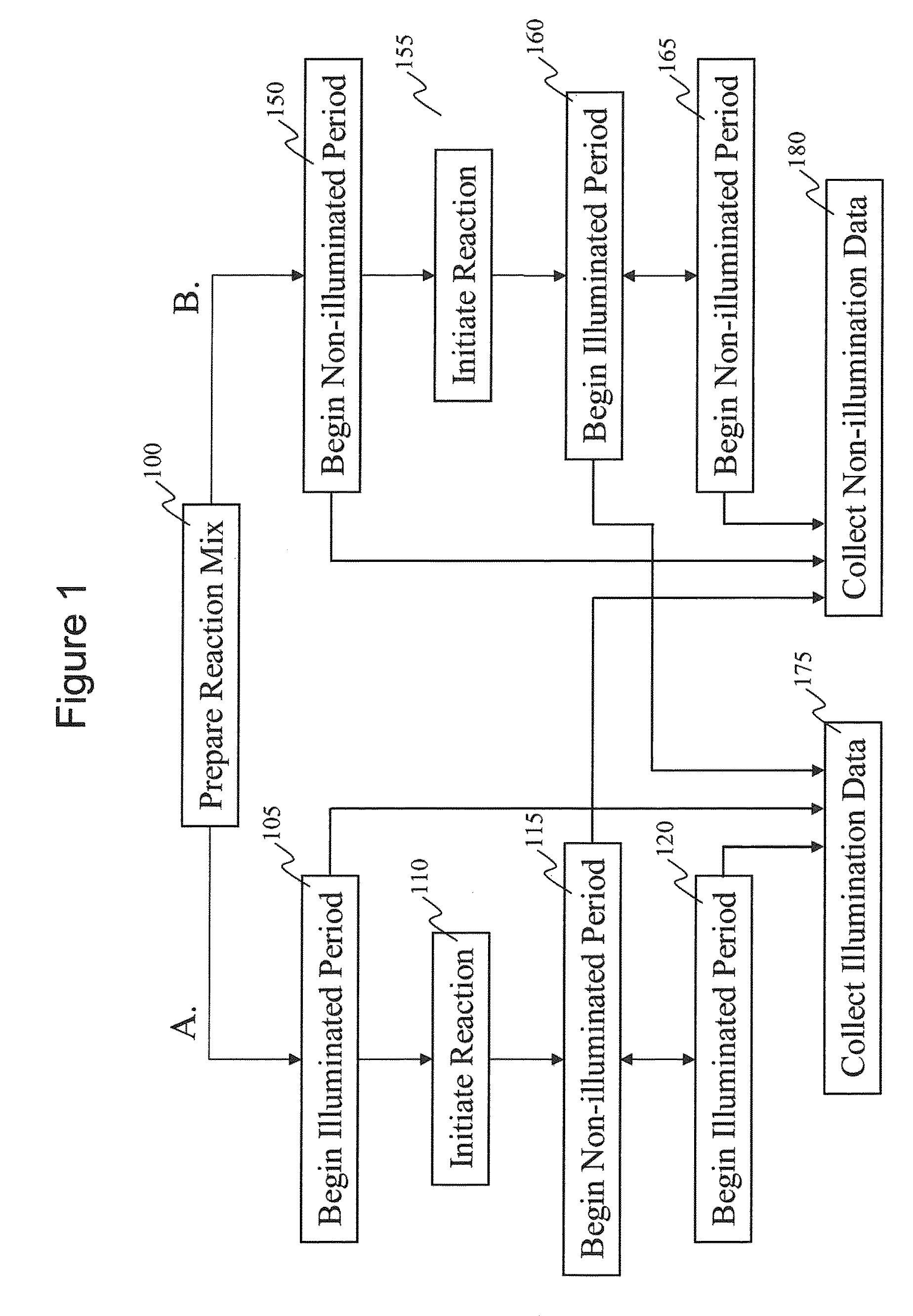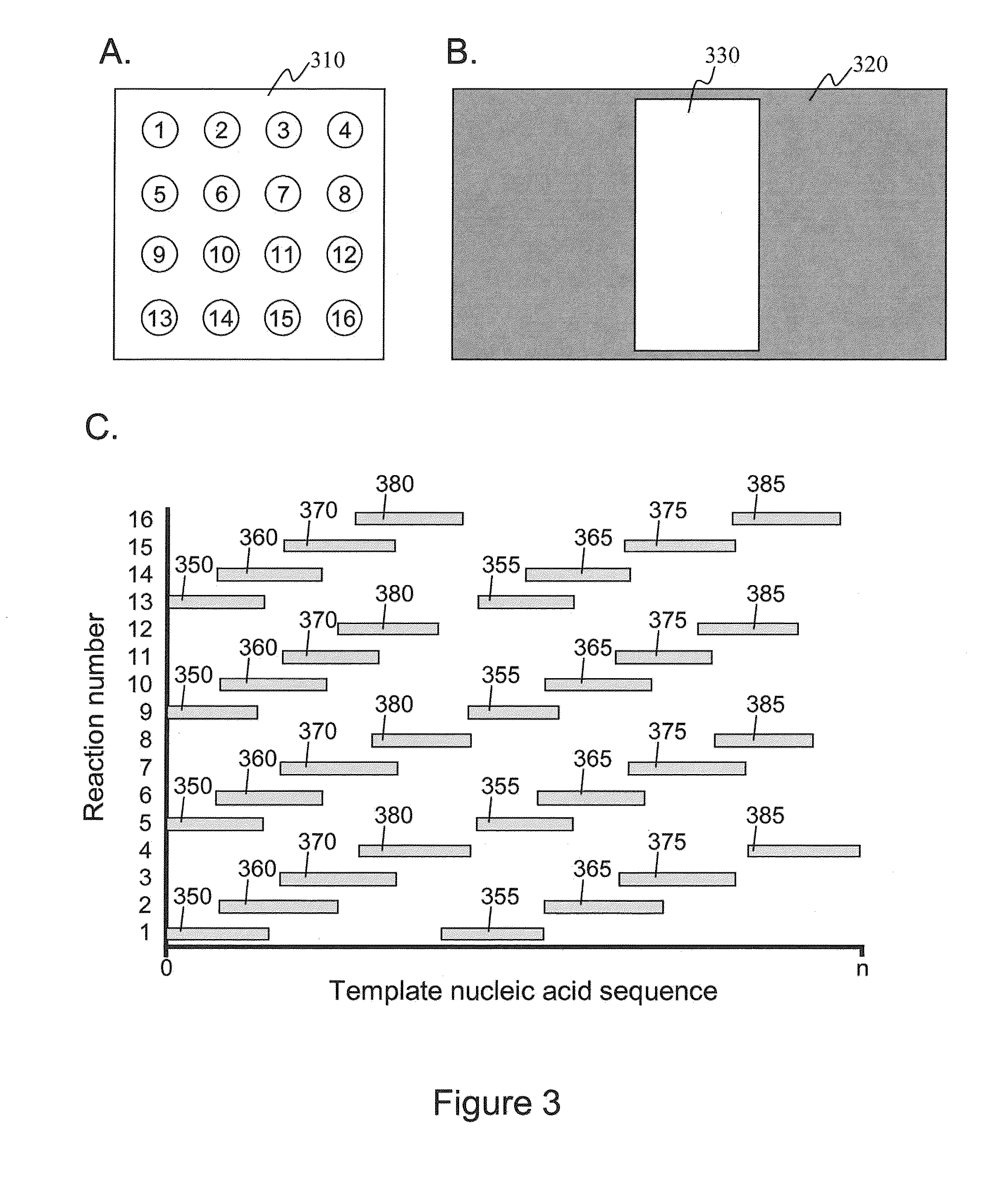Intermittent detection during analytical reactions
a technology of intermittent detection and reaction, applied in the field of intermittent detection during analytical reactions, can solve the problem of reducing the ability to obtain sequence data from a second portion of the template nucleic acid, and achieve the effect of increasing the flexibility of the investigator and avoiding damage or at least delay
- Summary
- Abstract
- Description
- Claims
- Application Information
AI Technical Summary
Benefits of technology
Problems solved by technology
Method used
Image
Examples
example i
[0238]A nucleic acid template was provided that comprised a double-stranded region and two single-stranded linker portions at each end. The first linker portion connected the 3′ end of the sense strand with the 5′ end of the antisense strand, and the second linker portion connected the 3′ end of the antisense strand with the 5′ end of the sense strand. This template was designed to form a single-stranded circle of approximately 500 bases when the double-stranded region was opened (e.g., by heat denaturization, helicase activity, etc.), and is sometimes referred to as a SMRTbell™ template. A plurality of this nucleic acid template was incubated with polymerases, primers, and other reaction components to allow formation of polymerase-template complexes. (See, e.g., Korlach, J., et al. (2008) Nucleosides, Nucleotides and Nucleic Acids, 27:1072-1083; and Eid, J. (2009) Science 323:133-138.) The complexes were immobilized in zero-mode waveguides in a reaction mixture containing all neces...
example ii
[0241]As in Example I, a SMRTbell™ template was used. For templates of defined sequence, PCR was used to generate 3 or 6 kb DNA inserts for the double-stranded region in the SMRTbell™ templates using a standard PCR methodology. For genomic and other biological samples, a DNA fragmentation protocol was used that generates DNA fragments distributed around 3 or 6 kb. Generation of fragments in these ranges was done using a HydroShear® (Genomic Solutions®) device with settings recommended by the manufacturer. The random genomic DNA fragments were enzymatically treated to generate blunt ends. Both the PCR products and randomly generated DNA fragments were phosphorylated and then immediately put into a ligation reaction with a blunt hairpin adapter. The products were purified through two size selection steps using reduced volumes of AMPure magnetic beads (Agencourt®) to remove hairpin dimers and other short products. (Fabrication of SMRTbell™ templates is further described elsewhere herei...
PUM
| Property | Measurement | Unit |
|---|---|---|
| damage threshold | aaaaa | aaaaa |
| damage threshold | aaaaa | aaaaa |
| damage threshold | aaaaa | aaaaa |
Abstract
Description
Claims
Application Information
 Login to View More
Login to View More - R&D
- Intellectual Property
- Life Sciences
- Materials
- Tech Scout
- Unparalleled Data Quality
- Higher Quality Content
- 60% Fewer Hallucinations
Browse by: Latest US Patents, China's latest patents, Technical Efficacy Thesaurus, Application Domain, Technology Topic, Popular Technical Reports.
© 2025 PatSnap. All rights reserved.Legal|Privacy policy|Modern Slavery Act Transparency Statement|Sitemap|About US| Contact US: help@patsnap.com



